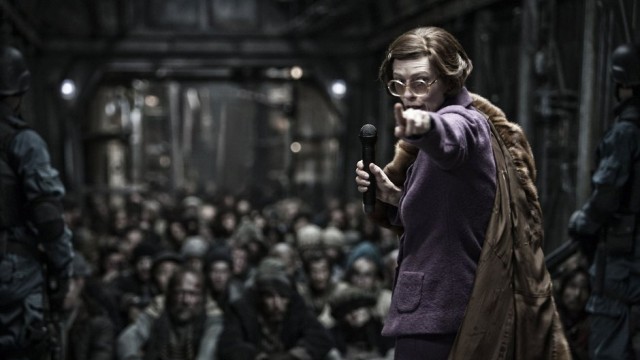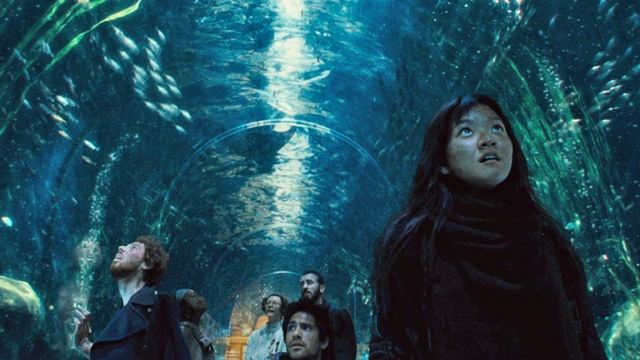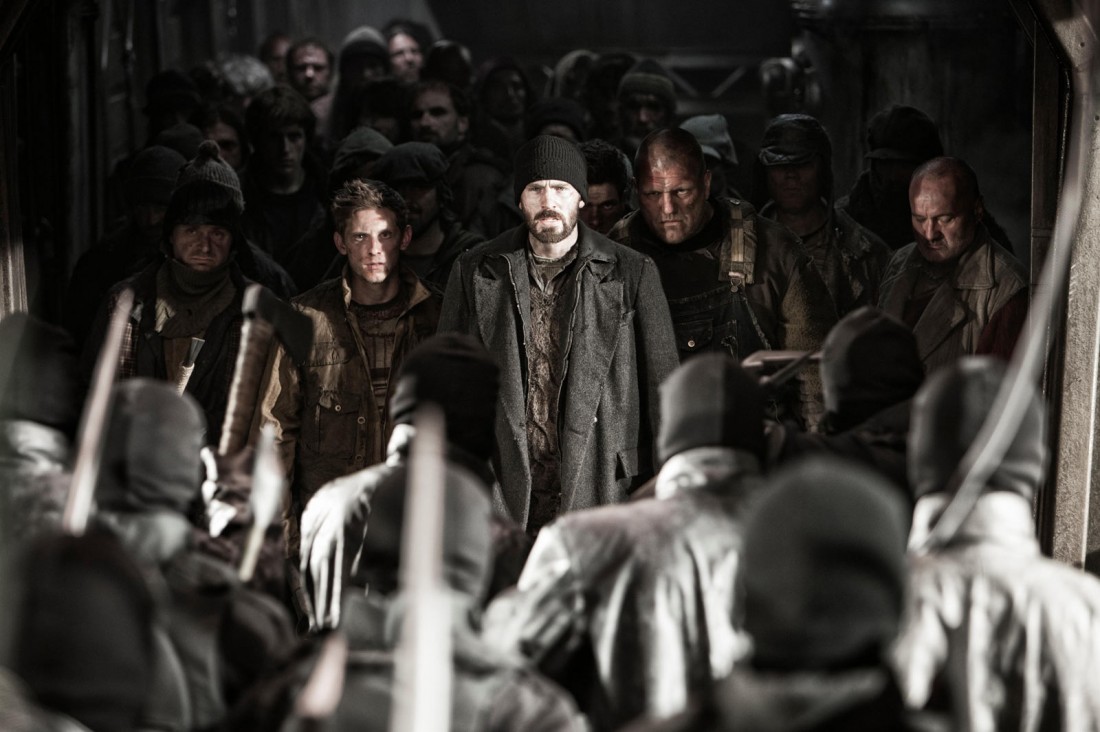Every filmmaker has their obsessions. Martin Scorsese has examined the ins and outs of Catholic guilt and redemption through a gangland lens since the start of his career. Alfred Hitchcock nursed a predilection for mistaken identity and the kinky duality of treating his viewers like voyeurs. Kathryn Bigelow’s work often doggedly fetishizes images of modern American law enforcement and military as a method of social critique. The films of Akira Kurosawa reveal his tendency to depict postwar Tokyo as a world defined by rampant cultural anxiety. Art, no matter the medium, has a way of attracting people who are obsessed with and sensitive to the world around them; naturally, their compulsions find avenues to worm into their work, whether or not the artists mean for it to happen.
South Korean maestro Bong Joon-ho’s personal artistic obsession happens to be obsession itself. Since debuting with Barking Dogs Never Bite in 2000, as the Korean New Wave swelled following the success of 1999’s Shiri, Bong has devoted himself to studying obsessive human behavior through his films. Nobody might have guessed at how strongly that trait would reverberate throughout his filmography at the time — after all, one film alone rarely defines a director’s entire body of work. But in the ensuing decade and change, Bong has emerged as a kind of modern day Captain Ahab, a narrator chasing obsession itself through stories about lovesick, socially withdrawn people, guilt-ridden revolutionaries, desperate, dysfunctional families, and unscrupulous cops.
Believe it or not, Bong had obsession on the brain even fourteen years ago; Barking Dogs Never Bite, a movie that’s unjustly overlooked in discussions of his work, mires itself in two kinds of obsession, while 2003’s Memories of Murder dramatizes South Korea’s first documented serial murders, as well as the often amoral efforts of the investigating police officers to capture the culprit. 2009’s Mother portrays one woman’s quest to prove her intellectually disabled son’s innocence in the killing of a high school girl. And speaking of Captain Ahab, 2007’s The Host – Bong’s most widely recognized film – chronicles a father’s struggle to find and recover his daughter amidst bureaucratic flimflam after a giant monster leaps out of the Han river and steals her away into the city’s sewers. Obsession certainly isn’t the only object of Bong’s fascination, but it’s chief among his most longstanding artistic endeavors.
While the director’s latest film, Snowpiercer, might be better known stateside for the “inside baseball” kerfuffles surrounding its long awaited release in multiplexes and art houses across the country, it also encapsulates one of the major running themes of Bong’s creative output perhaps better than any other movie he’s released to date. Snowpiercer, a slice of science fiction dystopia set on a colossal globetrotting bullet train against the backdrop of a man-made ice age, exists as a veritable echo chamber of obsession; the namesake train is the product of one man’s personal obsession. So too are the social injustices that shape its plot.

The characters that act out the film’s central drama each cling to their individual manias, marching toward their respective fates in service to obsession. Everybody here has an agenda they’re determined to fulfill, fie upon the mental and physical costs of seeing it brought to fruition. Curtis, Snowpiercer’s archetypal hero, is driven to revolt against the social order imposed within the locomotive’s confines; he’s the leader of the tail end of the train’s population, the oppressed majority forced to live in squalor while members of the elite ruling body reside in the front, indulging in grotesque luxury. Conversely, Wilford, the man who designed the gargantuan vehicle, has a clear vision of the world as a finely tuned ecosystem, one in which balance is paramount to survival. There has to be an underclass for the engine to keep running, an idea that Bong takes to a literal extreme in the film’s climax.
Between these two titans there stands an endless conga line of people who hold to the same goals and ideologies as either one or the other. Namgoong Minsu, the man who designed the locks on the Snowpiercer, joins Curtis’ rebellion seemingly to feed his drug habit – he’s addicted to Kronol, a flammable and highly addictive substance made from recycled toxic waste – but in contrast to everyone else around him, he wants to escape from the train with his daughter, Yona, rather than seize control of its engine (Control the engine, control the world). Edgar, Curtis’ second-in-command, is as possessed by the zeal for revolution as his idol, if not more so, while the indomitable Tanya is boundlessly determined to retrieve her son Timmy from Wilford’s clutches. She’s the archetypal mama bear, set loose on a totalitarian state that literally runs on child labor.
On the other side of the conflict, there stands Franco the Elder, one of Wilford’s henchman, a man made no less dangerous by the fact that he’s never addressed by name in the film. Franco sustains any number of potentially fatal injuries on his mission to stop Curtis’ campaign, but against all odds, the sharply dressed thug just plain refuses to die until the very end. Most of all, there’s Mason, Wilford’s primary lackey, a bucktoothed Margaret Thatcher surrogate who acts as her superior’s proxy when the unruly tail end inhabitants need to be disciplined. Mason happily parrots Wilford’s grotesque Randian philosophy while fueling the religious fervor of the train’s one percenter population, who acknowledge the Snowpiercer’s (admittedly pretty miraculous) engine with deific reverence.
The train worship may well be the film’s most omnipresent and world-defining obsession. Cartoonish propaganda fed to the children of the wealthy indoctrinates them in the belief in the engine’s infallibility. The engine will never die, we’re told, but when Curtis finally confronts Wilford face to face in the Snowpiercer’s leading compartment, we learn that this is in fact bullshit; the engine is failing, falling apart day by day, hence Wilford’s practice of snapping up kids from the tail section. Turns out that he likes children not for the reasons intoned through dialogue – a few lines here and there make him sound like a pedophile, a suspicion that doesn’t feel totally unwarranted – but because they fit perfectly beneath the train’s floorboards, where they labor constantly to keep society on the rails.
The upper crust have placed their faith poorly. Everything Mason tells them about the engine wind up being fallacious. The grand lie extends even to the people living in the rear compartments, though as they’re disadvantaged in every way compared to their rich overlords to begin with, they probably don’t care as much about the glorious engine as they do about dwelling in poverty and being forced to eat the same horrible, gelatinous protein bars every day of their lives. In the end, they’re better equipped to deal with the reality of the engine’s frailty than the bourgeois contingent. The Snowpiercer is a prison for them rather than an actual home, not so much a shield against the perilous world outside but a substitute. Train life hasn’t been good to them. They have less to lose by consequence.

So maybe Namgoong’s plan is better than Curtis’, though neither of them arrives at consensus. Each is too focused on his own plan to see the possible upside of the other’s. In fairness, Curtis’ obsession packs more of a wallop than Namgoong’s, but Namgoong isn’t running from the horrors of his past. Curtis, on the other hand, stubbornly plows forward with his bid for supremacy because of the overwhelming guilt he feels for participating in the rampant, horrific cannibalism that defined the early days of life in the train’s tail section. When Namgoong proposes blowing the bloody doors off of the train, using as a makeshift bomb the lumps of Kronol he’s collected throughout the film like tokens in a video game, the two men engage in burly fisticuffs. Such is Curtis’ devotion to redeeming himself, and Namgoong’s to getting the hell off of the Snowpiercer.
But before either of them can achieve their respective endgames, they have to contend with the obsessions of Wilford. Wilford believes in a world where everyone’s social station is preordained; the introduction of privilege is essential to maintaining equilibrium aboard the train. It’s a notion he (and Gilliam, Curtis’ mentor and actually a traitor in his midst) steadfastly clings to, and which lends him all the moral leeway he needs to perpetrate countless atrocities against the tail residents. He cuts a far more frightening figure than Mason, his puppet, who regurgitates all of the appalling philosophy she’s picked up from him – she might believe in his ideals, but on a far more superficial level. If Mason is fixated on anything, the film suggests, it’s her own endurance. (which makes the scene in which Curtis coldly guns her down absolutely jaw dropping).
Snowpiercer’s climax is caught between this obsessive triumvirate, with each man vying for his own ends through whatever means necessary. Ultimately, everything they work for ends in calamity. Namgoong’s bomb goes off as intended, but in the bitterest of ironies, he cannot get the door to Wilford’s chamber to close against the impending blast. The explosion claims all in its path, save for Yona and Timmy, spared from a fiery end when Namgoong and Curtis shield the youths with their own bodies, while Wilford calmly, sardonically accepts his fate from his seat at the dinner table. You may place odds on who else makes it off the train alive, but the combined wrath of both the detonation and the ensuing avalanche that batters the Snowpiercer clean off of the tracks leave little to chance.
Norman Mailer once described obsession as, “the single most wasteful human activity, because with an obsession you keep coming back and back and back to the same question and never get an answer.” In Snowpiercer, this is half true. Bong’s characters relentlessly pursue their obsessions, sometimes even to the point of dehumanizing themselves, but at the end of their pursuits they’re given resolution in the form of oblivion. Obsession leads to death. Yet in the face of a post-post-apocalyptic world, Bong’s study of social hierarchies as both a means of preserving order and life, and also a method of amoral systemic oppression, reveals his own obsession: a faintly glimmering hope that an honest life beyond the borders of cruelty, injustice, prejudice, and classism is possible – dangerous for certain, but not unattainable.


















2 thoughts on “Control The Engine, Control The World: Obsession In “Snowpiercer””
This is probably the best explanation of the film. Every other writer seems uncertain of their own interpretation of the movie’s ending. But it seems like you could have arrived at this conclusion only by, well – obsessing over the notion that there must be a definite meaning to it.
In a manner of speaking, well, yes. I wouldn’t say that there’s a “definite” meaning to either the film or Bong’s filmography in total, but I think you can definitely read that through line of obsession out of both. Seems reasonable. There’s a lot of other stuff going in in most of his work beyond that, of course.